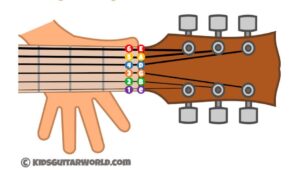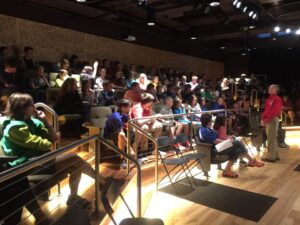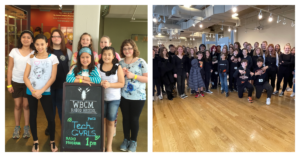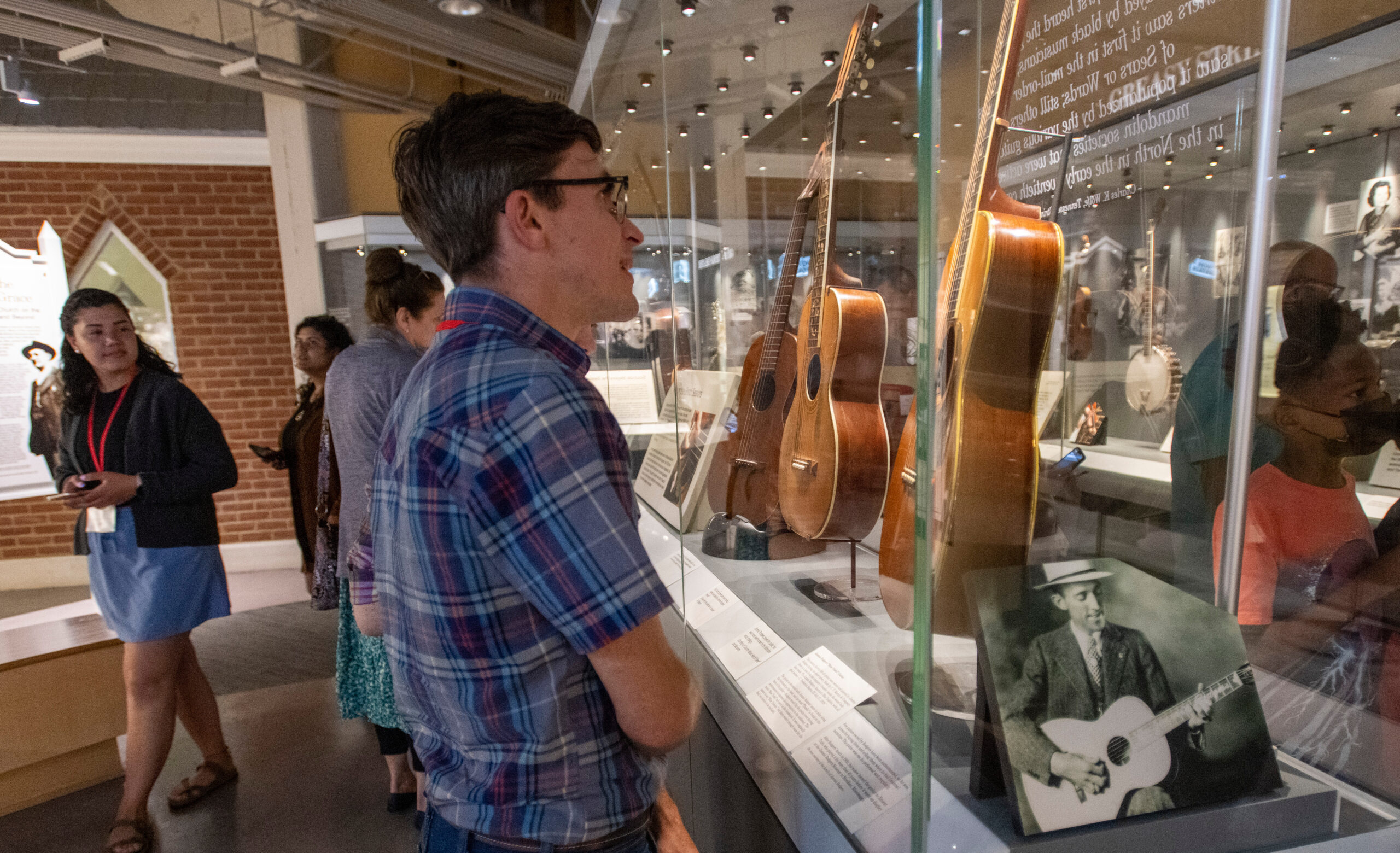Today is National Teacher Appreciation Day, also known as National Teacher Day. The National Education Association notes that this is “a day for honoring teachers and recognizing the lasting contributions they make to our lives.”
Here at the Birthplace of Country Music Museum, we can’t sing the praises of teachers high enough – we love working with them and finding new ways to connect with teachers and their students. Teachers do too many amazing things for us to list them all. However, we are going to share our top six reasons why teachers ROCK, and because we are a music museum, we are using the guitar – a fundamental instrument of country music – and its six guitar string notes, listed from the bottom string up, as our inspiration: E B G D A E!

Graphic of a guitar neck with the strings labelled bottom to top as EBGDAE/123456. © KidsGuitarWorld.com
E String
Being a teacher is hard, but despite the challenges faced, teachers strive to encourage and excite their students to learn, think critically, and explore the world around them every single day. We often see the evidence of this with the student who come through our doors – many of them have learned about early country music or local history or technology in their classrooms already, priming them for a more meaningful experience and providing us with a lot of great questions and observations as we share the museum with them.
B String
And this leads to the tangible outcome of this prep – when teachers bring students to the museum. We are so grateful for the school field trips that are scheduled at the museum, and we’ve seen the number of these tours continually grow since we opened in 2014. Some teachers and students are coming for the first time; other educators bring their classes year-after-year. They come from our local Bristol, TN/VA schools, the Northeast Tennessee and Southwest Virginia region, and even further afield, including schools in Georgia, Northern Virginia, and Iowa!
Not only do teachers bring students to visit the museum, but they also put a lot of effort into the planning of and during these field trips, which always makes the experience better for all of us.

A student group is introduced to the museum and the orientation film by docent Richard Horner. © Birthplace of Country Music
G String
We are also lucky to get useful guidance from teachers. Through school tour surveys, teacher in-service workshops, and one-on-one conversations, educators provide us with amazing feedback that help us to improve our programs for students and teachers alike. In 2020 and 2021, we worked with a focus group of teachers from the Bristol, TN/VA public schools to hear about their ideas, suggestions, wants, and needs for our museum-based lesson plan project, and we also had our first teacher intern who helped us on the project and to deliver two impactful in-service workshops for K-12 educators. The insights we gained from this experience were invaluable!
D String
The teachers we partner with strive to develop creative and interesting ways to engage their students with the museum and its content. We’ve had so many positive experiences working with different classes and learning groups – from the YWCA TechGYRLS production of a radio show to mark the Smithsonian’s Museum Day Live! event; the fun activities we’ve done with the Virginia Middle School after-school club (including square dancing, the science of sound, and an upcoming instrument petting zoo); the class that had been immersed in Johnny Cash’s music before our Johnny Cash/Folsom Prison special exhibit in 2022; and talking to a high school class about the things that go into curating a small exhibit, how to write museum labels, and ways to engage people with their own content.

Left: The YWCA TechGRYLS pose with the notice of their radio show in the museum lobby. Right: A group of students honor the “man in black” by wearing all black when visiting 1968: A Folsom Redemption in 2022. © Birthplace of Country Music
A String
As we said earlier, being a teacher is a hard job. But the teachers we know are amazing advocates for their students and for the joy of learning. And they are ALWAYS doing so much to support their students, to help them thrive, to be a positive person in their life, and so much more.
And they also advocate for us – by bringing their classes to the museum, by sharing events and other opportunities we offer to students and their families, and by letting our community know that the museum is an important educational asset.
E String
Finally, the teachers who visit the museum encourage smiles and laughs from their students throughout their time with us. They play Banjo Bingo; they sing along in the karaoke booth; they give a whole host of answers to one of our favorite questions: how many grooves are on a record?; they dance in the Immersion Theater; and so much more. They show the kids that you can learn AND have fun at the same time!

Sullins Academy teachers and students took part in a vehicle-building exercise as part of the Things Come Apart special exhibit at the museum in 2017. © Birthplace of Country Music
Rene Rodgers is the Head Curator of the Birthplace of Country Music Museum and oversees its educational programming. She loves teachers!




